Andrea Echeverri: 'I have serious self-esteem issues.' Self-portrait of an artist

1993 was the year everything exploded. "Mujer gala" became Aterciopelados ' first hit, and Andrea Echeverri 's vocals and Héctor Buitrago's metal-punk virtuosity kicked into the Colombian rock soundtrack of the 1990s.
An entire generation had the lyrics about a 'bad girl and a dead fly' etched in their heads alongside Nirvana's Smell Like Teen Spirit (1991) or Soda Stereo's De Música ligera (1990). The success was an avalanche; the concerts began, and Andrea had to leave behind her 'other life,' not that of a 'gomela' from northern Bogotá, who in her first act of rebellion ran off with her boyfriend and founded Barbarie , a legendary bar in a colonial mansion downtown, but that of an artist from the University of the Andes who had specialized in ceramics in England and exhibited her cobras and pop snakes at the Bogotá Museum of Modern Art.
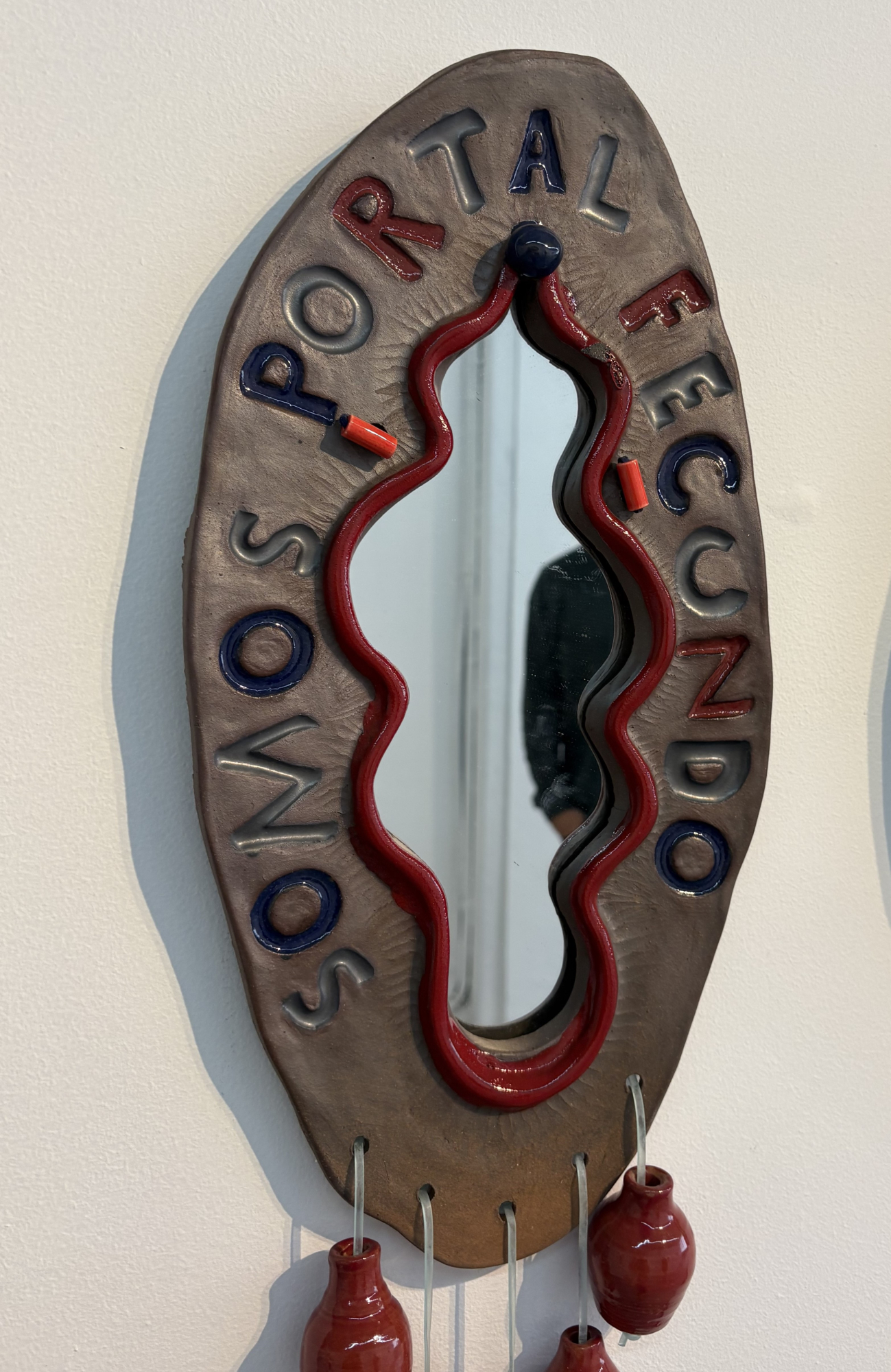
One of the mirrors at Ovarios Calvarios. Photo: Fernando Gómez Echeverri
Echeverri was once a full-time visual artist, destined to be alongside the maestro Beatriz González, but rock 'n' roll kidnapped her . She owned a craft store called Tierra de Fuego, where her lamps vibrated with all their creativity, and she performed at national biennials and salons. But how could she escape the call of rock and the fury of the stage? Aterpeciolados is living history; however, in more than 30 years of a brilliant musical career, Andrea has never stopped producing works. Her pieces are hidden on the covers of her albums or in her clothes. And in 2021, she returned like a hurricane with the exhibition 'Ovarios calvarios' at the Claustro de San Agustín. "I saw many young women, some cried, I cried too." In the exhibition, Echeverri took a direct swipe at abuse, spoke of rape without hesitation, and mixed—of course—her pieces with the lyrics of her songs; Some of the most representative works were mirrors with vagina-shaped frames bearing clear messages: "Where we come out" or "We are a fertile portal." There were also several reminders of the horror with the names of Rosa Elvira Cely and Yuliana Samboni, two victims of atrocious femicides. Unforgivable.
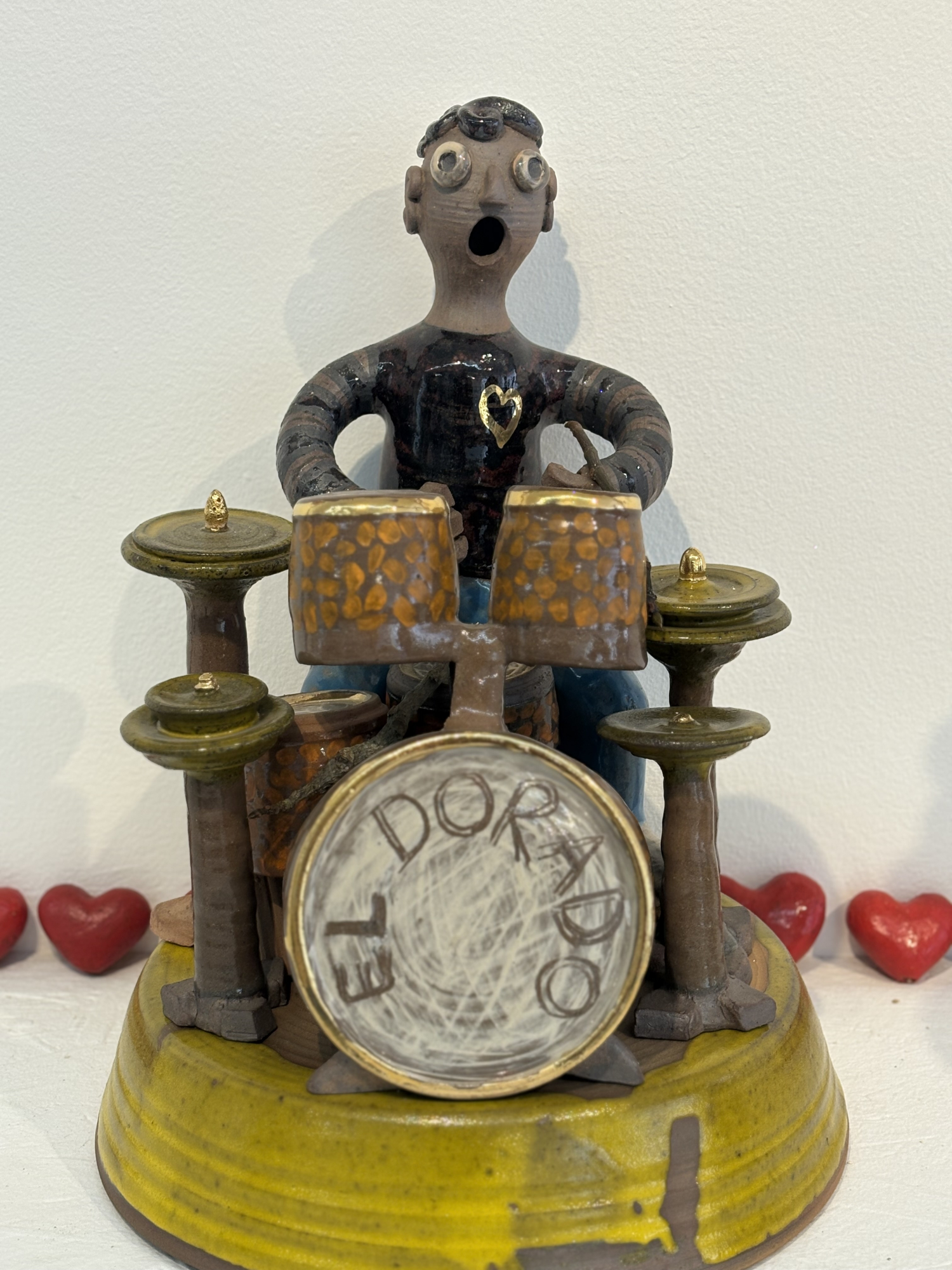
Echeverri portrayed each member of Aterciopelados. Photo: Fernando Gómez Echeverri
Now their ceramics are coming to the Salón Comunal gallery (Transv. 27ª no. 53B-25) with those mirrors and several surprising pieces like the ceramics of the entire band Aterciopelados, a tribute to Gustavo Cerati—who, back in the day, when they were young and small, used to take them shopping when they were in the US, “it was very fashionable!”—and some disturbing heads with faces split by lightning and guitar string hair. This is the self-portrait of a little rocker flower.
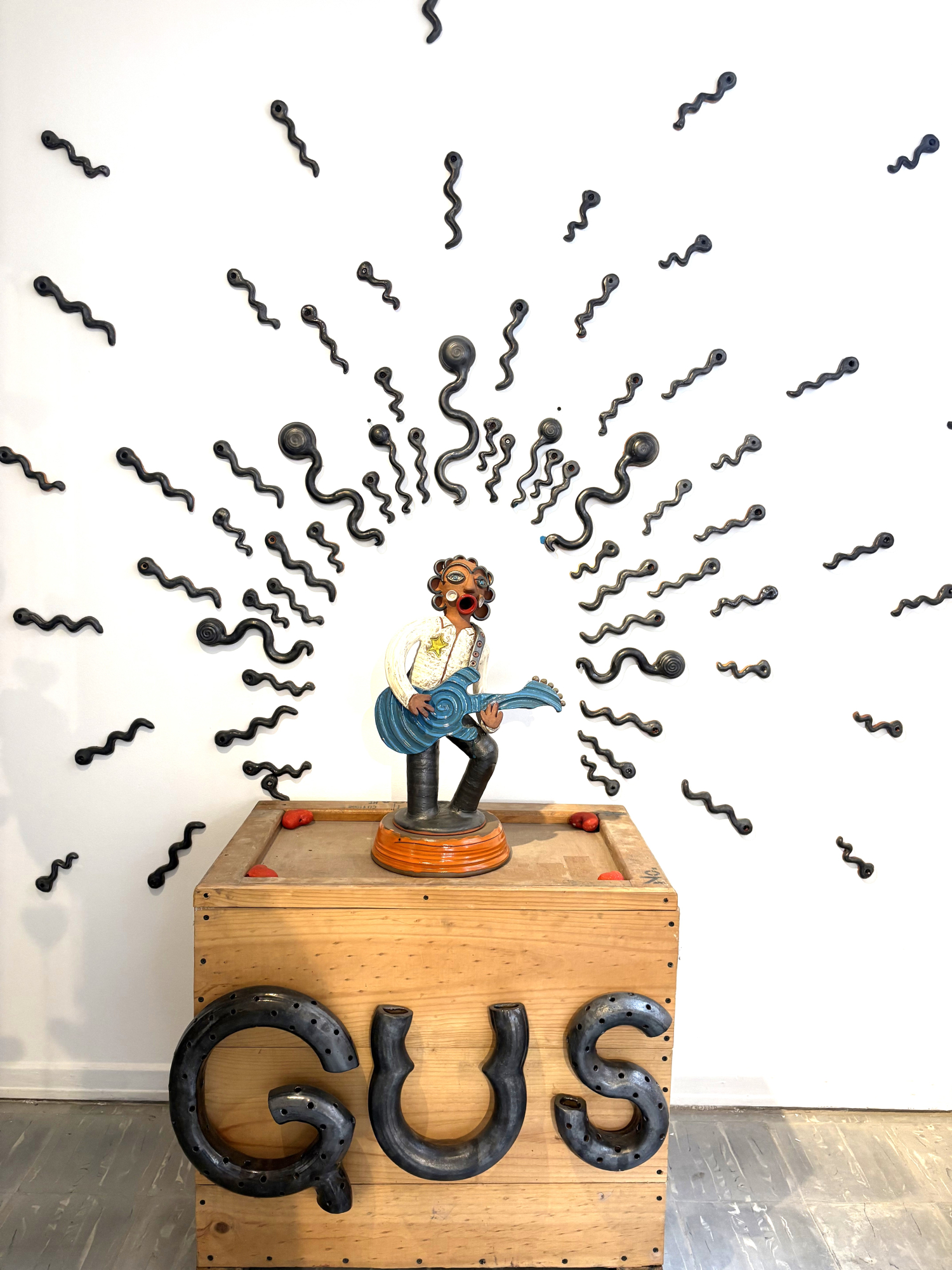
Echeverri's work in homage to Gustavo Cerati. Photo: Fernando Gómez Echeverri
What are your favorite working materials?
How many years have you been in the career?
A musical career, in my thirties, and a bit more of an artist… but with bumps…
Why did you decide to become an artist?
It wasn't a decision, I liked to draw and I was the girl in the class who made the signs for the bride and groom's names and things like that, I wanted to draw, to study something that would make me a living, like industrial design, they sent me to the United States to take English and at the University of Michigan I took drawing classes and I was very happy, I came back more determined, I took ceramics and jewelry classes and I arrived in the Andes.
At what point did rock music draw you away from the visual arts?
Rock music took me away from art in '94 or '95. I kept going to regional clubs, but Aterciopelados exploded.
Do you still have your childhood drawings?
Which living or dead artist would you commission to paint your portrait?
I have three all-time favorite Colombian artists: Beatriz González, Álvaro Barrios, and José Antonio Suárez. In fact, all three appear on the album cover of "Gozo Poderoso." I'd commission any of them to paint my portrait. And of course... I would have liked a Warhol portrait!
Which collection are you most proud of?
In museums... mmm... I don't think I'm in any! The Museo de Antioquia asked me for a bone map, but it was a freebie, and I said no. But the beautiful thing about music is that people listen to you, that they have you on their playlist, that they show your music to their children, that they sing Florecita rockera together, that they sing karaoke, that they sing Baracunatana... those collections are important!
None! I'm pop: Warhol or Rauschenberg.
What is your masterpiece so far?
My masterpiece… in this intention of mine to bring together the two things that I am, music and ceramics, the most important and significant, is Ovarios calvarios, it was a very moving moment.
What has been your worst creative crisis?
I try to commit to daily creativity; to having projects, to having projects all the time. And sometimes they work out.
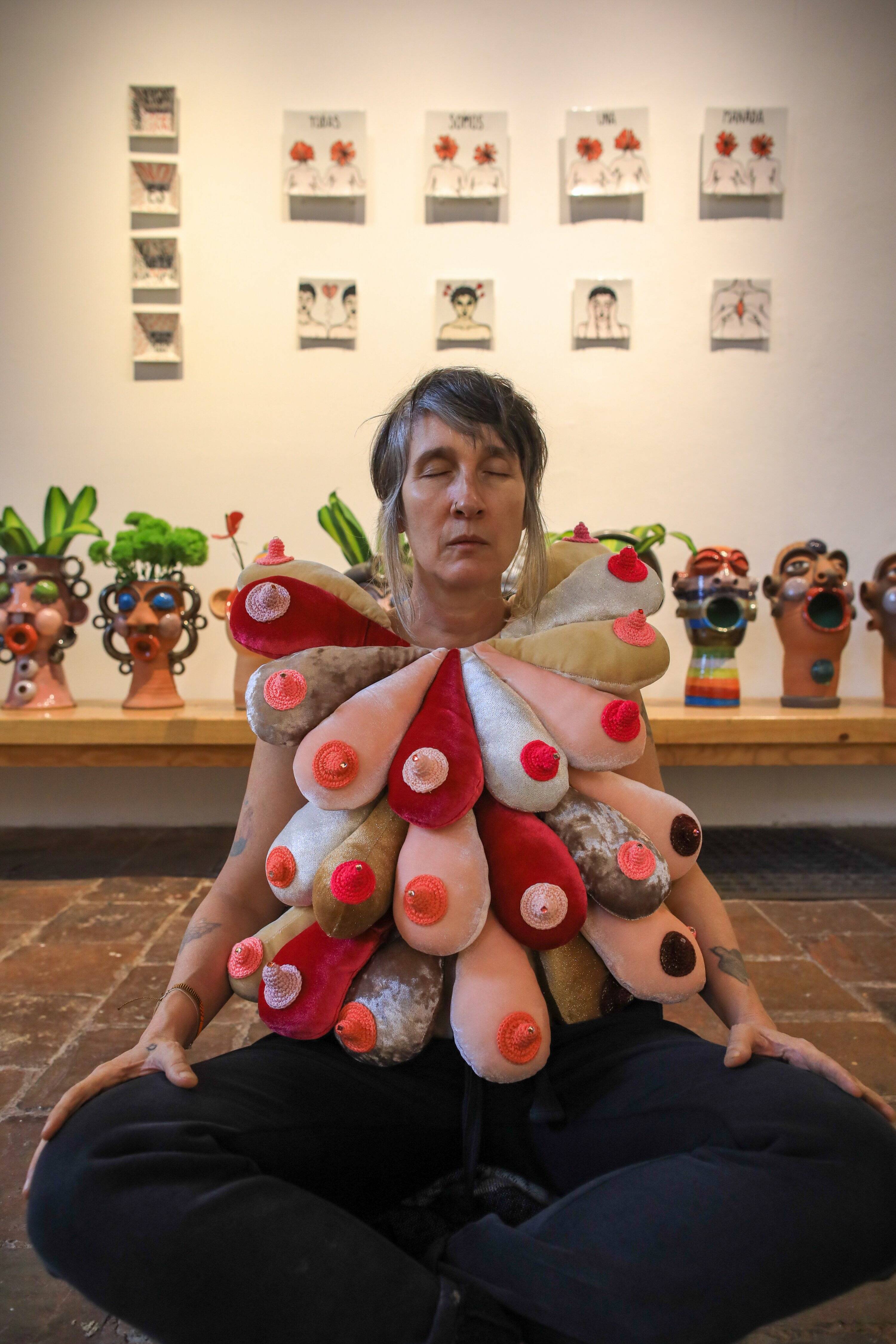
Andrea Echeverri, in her exhibition at the Cloister of San Agustín. Photo: César Melgarejo/EL TIEMPO
How tidy is your workshop?
Do you have working hours?
I don't have work hours, because they're determined by music and by the traffic rules. My workshop is in Cajicá, and in Bogotá I can only do small things, but without the traffic rules I come in early and work all day.
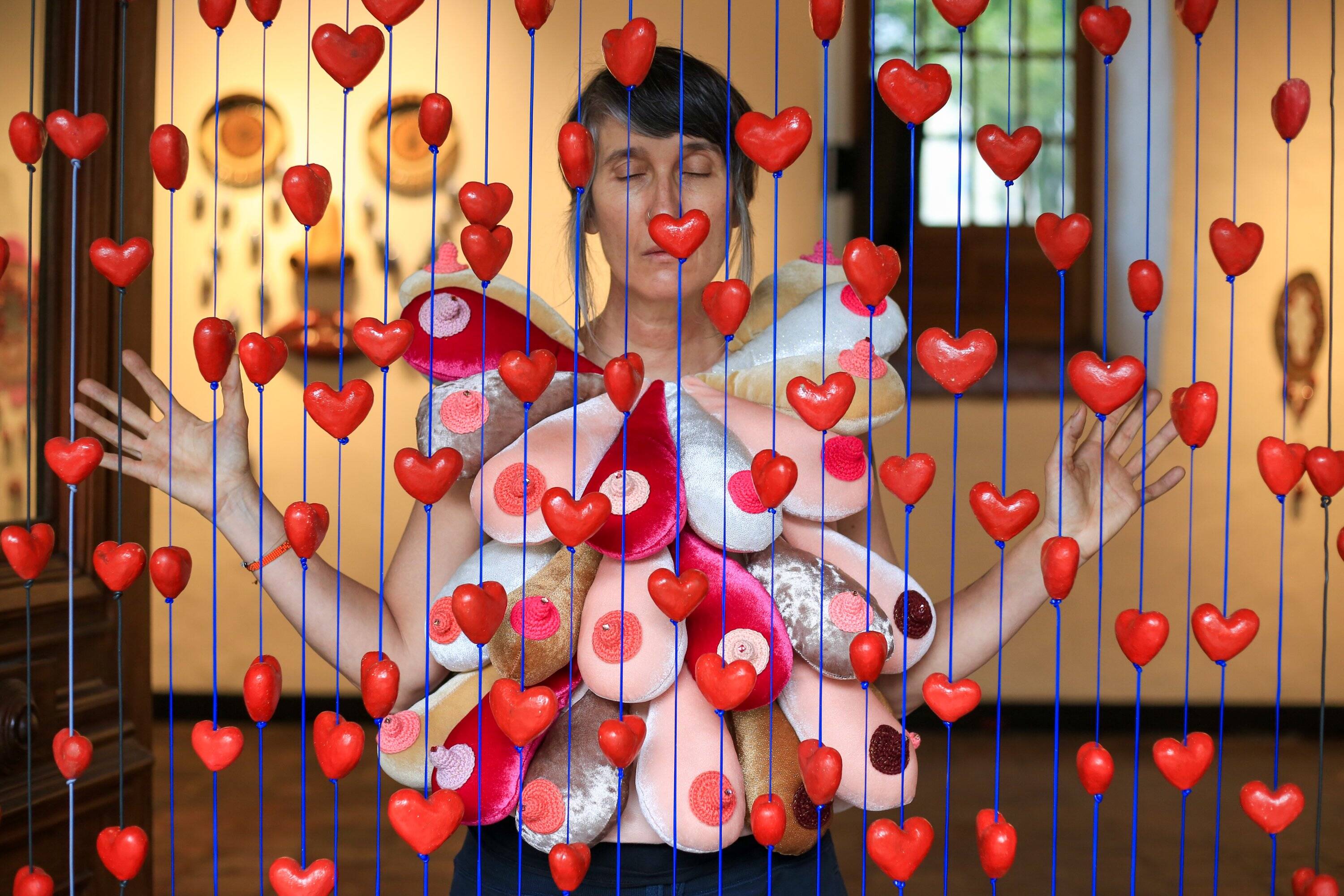
Andrea Echeverri, in her exhibition at the Cloister of San Agustín. Photo: César Melgarejo/EL TIEMPO
What was the first work of art you ever saw?
There was a Van Gogh reproduction of his Starry Night in my house, with its swirling clouds, but the first thing that really shook me was a Beatriz González retrospective at the Mambo, when I was in my second semester at the Andes. It left its mark on me, and it continues to leave its mark on me.
What criticism has bothered you the most?
Criticism is annoying, but you get used to the fact that some people like what you do and others don't.
And the one that has made her happiest?
Nice criticism is nurturing, compliments are beautiful, whether you receive an award, like a Grammy, or when women tell you you sing beautifully, or when a person in a fight trembles when they ask for a photo, or when someone tells you a song pulled them out of a depression. That's beautiful.
Do you collect works by other artists?
No. I have several Rosa María Jerez virgins.
Who is the artist you admire most in Colombia?
For you, who is the most important living artist in the world?
Which artist would you like to exhibit in the same room with?
Doña Beatriz and I. And with the great Colombian ceramists: Carol Young and Cecilia Ordóñez.
What work of universal art would you like to have in your living room?
Have you ever cried in front of a work of art?
I cried several times when I entered Ovarios Calvarios, and I saw girls with watery eyes, I also remember that I felt like something like a Rembrandt.
Do you consider yourself a genius?
Genius! Hahaha… no! I have serious self-esteem issues, and with what they now call the 'self-imposter complex'… sometimes I say, 'Wow, I have that! Sounds familiar.'
Is digital art the future? Do you already have NFTs?
What is your favorite art book?
All ceramists have The Ceramist's Handbook , by Bernard Leach.
Why is it worth buying one of your works?
That question reminds me of a meme: “Save a crazy person, buy art.”
Recommended: the story of Andrea Montañez 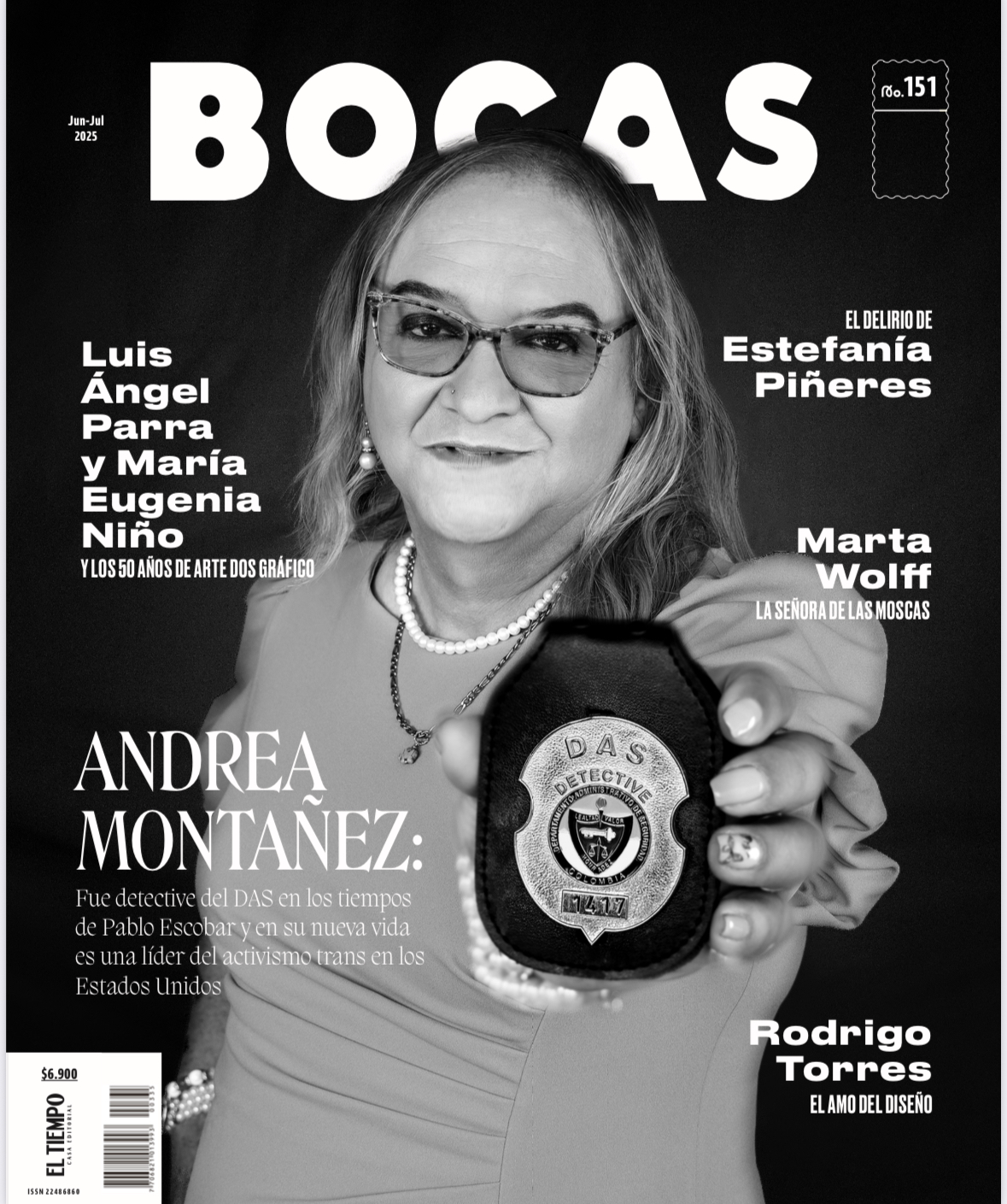
The interview with Andrea Montañez is the cover of the new issue of BOCAS Magazine. Photo: Jet Belleza (Digital post-production by Miguel Cuervo)
eltiempo

%3Aformat(jpg)%3Aquality(99)%3Awatermark(f.elconfidencial.com%2Ffile%2Fbae%2Feea%2Ffde%2Fbaeeeafde1b3229287b0c008f7602058.png%2C0%2C275%2C1)%2Ff.elconfidencial.com%2Foriginal%2Fcc0%2Fb0d%2F955%2Fcc0b0d95533500564866c5a1c5a6dd02.jpg&w=3840&q=100)



